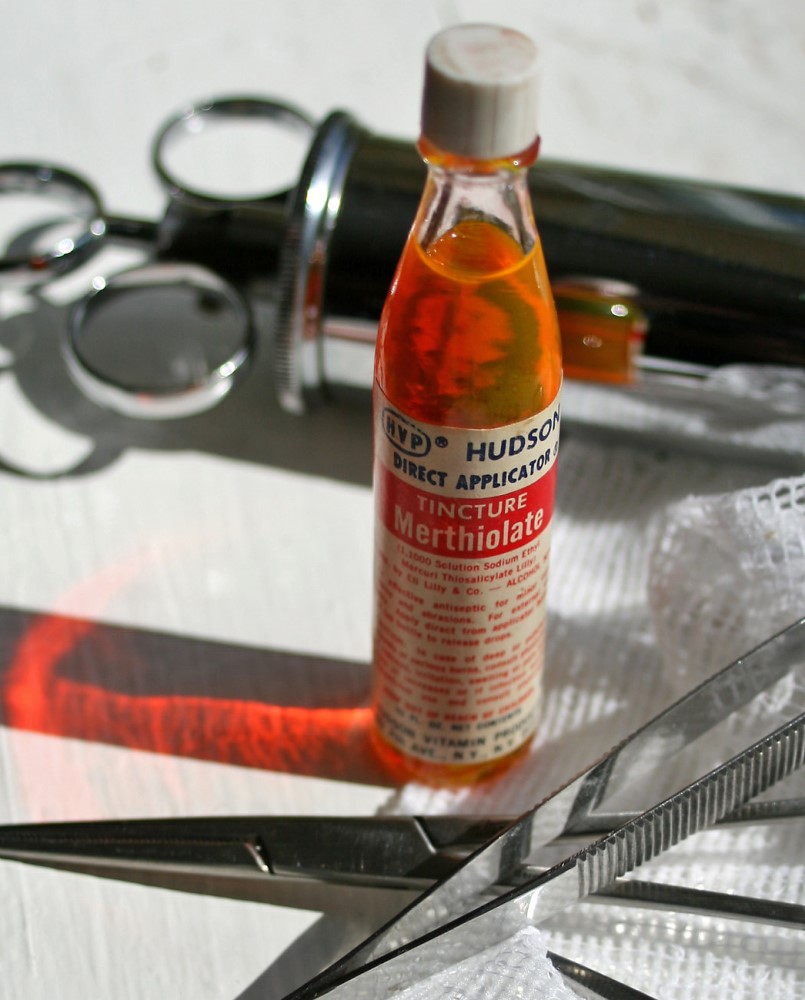
Thimerosal was commercialized by Eli Lilly
In 1928, Thimerosal was commercialized by Eli Lilly under the trade name Merthiolate, an antiseptic solution containing thimerosal, an organomercury compound. It was widely used as a topical disinfectant to prevent infections in minor cuts, scrapes, and burns.
It was originally a solution of 0.1% thimerosal, a mercury-containing preservative and antiseptic. Thimerosal was removed from many over-the-counter products in the late 1990s and early 2000s due to concerns about mercury toxicity.
Today, “Merthiolate” products are often mercury-free and use different active ingredients, such as benzalkonium chloride, while maintaining the “first aid antiseptic” use.
In 1927, Thimerosal was synthesized and patented by chemist Morris Kharasch at the University of Maryland. Thimerosal is an organomercury compound, meaning that it contains mercury bound to an organic (carbon-containing) molecule. It is a well-established antiseptic and antifungal agent.
Tags:
Source: National Library of Medicine
Credit:
